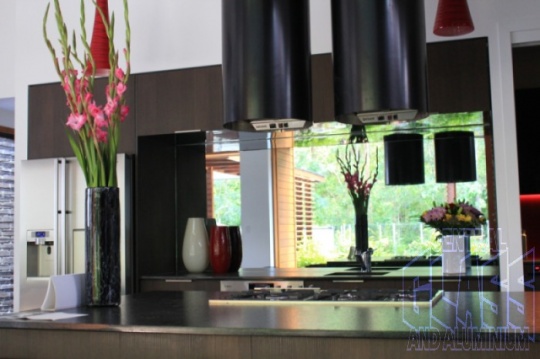Reflect, Highlight, Deflect – The Wide World of Mirrors
People use mirrors more often than they think:
• Getting ready for work or a night out
• Driving on the highway
• In the dentists’ office
• To see around corners
The list can go on and on. …..
Yet despite their everyday role, people are frequently confused by both the application and design of mirrors. To help clear up these points of confusion, here are some key things to remember:
What IS a Glass Mirror?
A glass mirror is essentially a piece of glass with a reflective metallic coating. Granted, there are different types of mirrors with different uses, but for a fundamental understanding, our definition here will do. There are other mirror based surfaces such as acrylic, but let us just consider glass mirror for now.
Mirrors in Impact Areas
Mirrors in impact areas, where people can fall in to them, like in the bathroom or gym are required by law to be safety mirrors.
What’s a safety mirror?
On top of the reflective (mirror) backing, a safety mirror has a “safety backing” designed to keep dangerously sharp shards from falling away should the mirror break. This is a woven piece of plastic that is adhered to the back of the mirror.
These mirrors are more commonplace than you might think. Dressing rooms, retail stores, pubs, restaurants…anywhere where someone can fall into the mirror (human impact zone)…will feature a safety mirror.
Mirrors in the Kitchen
Surprise! These aren’t really mirrors in the traditional sense but toughened glass panels such as Mirrorkote.
Normal mirror cannot be used in kitchen areas as it cannot be toughened to withstand the higher temperatures of cook-tops and the impact of heavy, dense metal kitchen tools.
Mirrors in the Garden
Many people love the idea of putting a mirror in the garden, particularly when they’re trying to encourage the antiquing of a mirror (black spot breakdown).
However, if you are not trying to create a black spot affect, do NOT use a traditional mirror in the garden.Instead, take advantage of mirrored acrylic panels. They look and reflect just like traditional mirrors, but without the risk of breakage and water damage.
As acrylic panels are extremely thin, be careful while mounting them. To avoid a distorted or warped view, we recommending adhering the panels to a solid and durable board before you display them in your chosen spot.
Mirrors and Black Spots
Traditional mirrors are made of layers (glass, mirror backing, safety backing etc) so when water or air gets between the layered surfaces of the glass and the reflective coating, it causes the mirror to go “bad” with black spots. This is damage, that unfortunately, cannot be removed so if this happens to you, have the mirror cut down and seal the new edges with a sealant or silicone to protect against further deterioration.
Framed or Unframed?
Whether you want a mirror framer or unframed, it’s entirely up to you. There should be no difference in mirror performance so long as you take care to seal the edges of the mirror!
Get creative !
You can do some amazing things with mirror and mirrored surfaces – check out our installation below we actually sand blasted the name of the store off the back of the mirror and then put LED lighting in behind it to create an light box affect on this wall of mirrors
Mirrored tiles are a bit of a blast from the past, however these are glass tiles with a metallic coating and come in amazing shapes and styles – so explore your reflections with mirrored surfaces and add some glitz to your life
For more information about glass products, check out of knowledge base of articles – you dream it we make it at CGA – got a question, Contact us.






